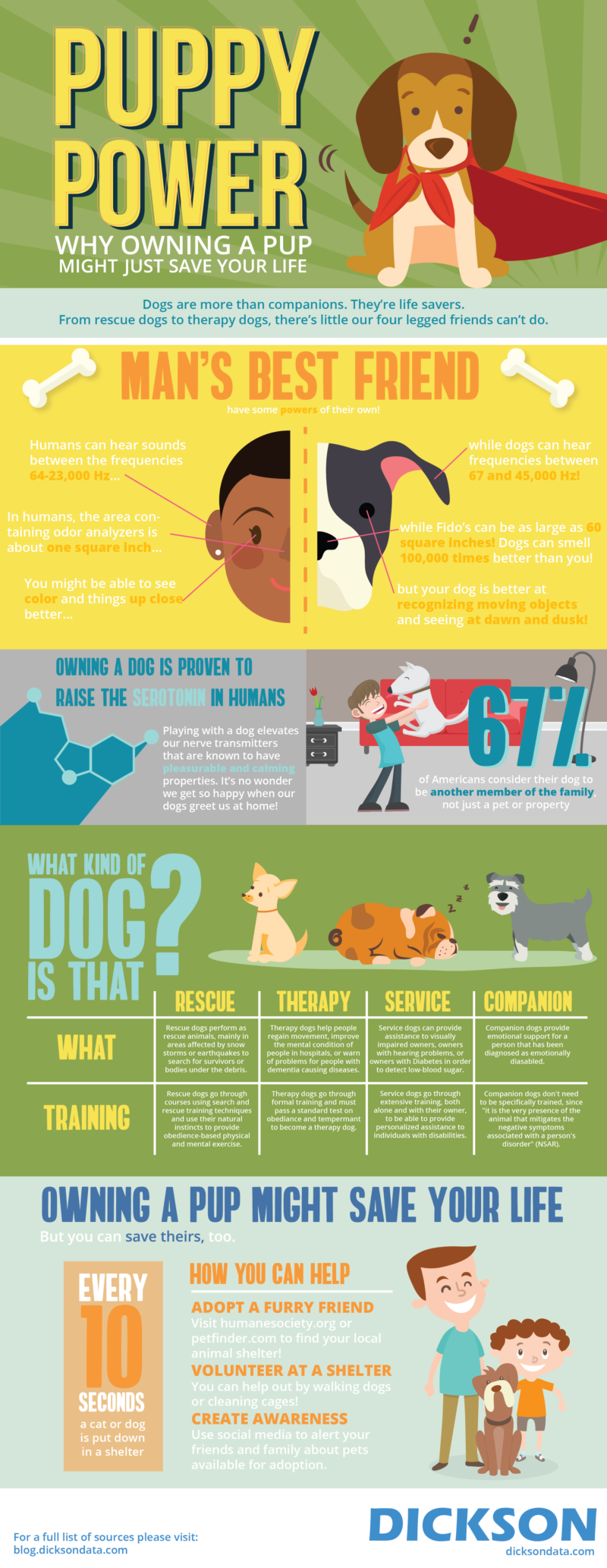Dogs have been “Man’s best friend” since 1789 when Frederick, the King of Prussia, coined the phrase. According to science, though, the phrase isn’t just fancy jargon. It’s fact.
Researchers from Japan’s Azabu University have conducted tests that suggest dog to human eye contact is responsible for an increase in oxytocin in the blood. This hormone is one that's associated with helping to build trust and love. It connects human to animal in ways that are both physical and emotional.
Over time, humans have come to realize that dogs could be trained to do incredible things. One of the most common ways dogs have been trained to help humans involves leading the blind. Organizations like The Guide Dog Foundation and the Guide Dog School work to train animals for the job.
Being able to lead the blind and assist those who are deaf is an incredible feat on its own, but man’s best friend has more tricks in store. Dogs also have the ability to serve as medical detection dogs. One such example is dogs who detect diabetes. The use of dogs to sniff out low blood sugars is relatively new. The first dog trained for sugar sniffing was a California dog named Armstrong in 2003. Since then the Dogs for Diabetics foundation has worked to train dogs and to develop and promote standards for all medical assistance dog teams.
The animal’s acute sense of smell gets the credit, but, until recently, we were unsure what exactly it was that dogs were noticing. As it turns out, the dogs are able to recognize the sudden drop in blood sugar based on a human’s breath. Isoprene is the main hydrocarbon that’s found in our breath and it is the trigger that allows dogs to recognize a hypoglycemia attack. As blood sugar levels drop, the level of isoprene in the breath rises. The scientific discovery could lead to the production of new medical sensors. Researchers still aren’t sure why such an inverse relationship exists, but their current belief is that it’s related to the production of cholesterol. Until that question is answered, we won't know how to keep an attack from happening, but understanding a way to watch for issues is a major win for the diabetic community in the meantime.
When we’ve covered diabetes in the past, we discussed it was a growing problem in this country. In fact, it’s become such a big deal that caring for it has become a billion dollar industry. How this new discovery affects that amount is still be seen. Logic suggests that new devices will lead to more money. That makes for a healthy business prognosis as our country’s health continues to trend in the wrong direction.

Sources:
- https://www.nsarco.com/service-definitions.html
- https://adata.org/publication/service-animals-booklet
- http://www.psychdogpartners.com
- psychdogpartners.org/resources/work-tasks/work-task-list
- Fine, Aubrey H. (2010) Handbook on Animal Assisted Therapy, Pomona, CA: Elsevier Inc.
- Bulanda, Susan and Larry Bulanda (2012) Ready! Training the Search and Rescue Dog, Irvine, CA: I-5 Publishing
- http://www.eva.mpg.de/psycho/staff/tomas/pdf/Hare_Tomasello05.pdf
- http://www.lsu.edu/deafness/HearingRange.html
- http://www.savets.org/Pages/DogsIncredibleSenseofSmell.aspx
- http://www.eenp.org/main/diabetic
- http://companiontraining.com/born-to-sniff/
- http://www.humanesociety.org/issues/pet_overpopulation/facts/pet_ownership_statistics.html
